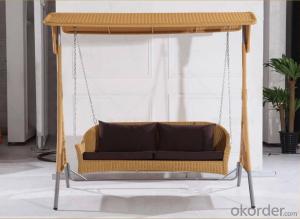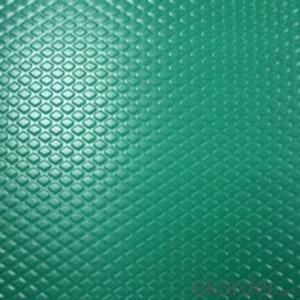1100 Aluminum Plate
1100 Aluminum Plate Related Searches
Led Light Bulbs For Ceiling Fixtures Led Lamps For Ceiling 42 In Ceiling Fan With Light Aluminum Coil Stock For Gutters Aluminum Foil For The Grill Hole Saw For Aluminum Plate Aluminum Tread Plate For Trailer Bow Plate For Aluminum Boat Aluminum Foil For Grow Room Aluminum Foil For Joint PainHot Searches
Stock Price For Aluminum Aluminum Coil Stock For Sale Aluminum Gutter Coil For Sale Used Aluminum Scaffolding For Sale 1/4 Aluminum Plate For Sale Aluminum Bar Stock For Sale Aluminum Round Stock For Sale Aluminum Diamond Plate For Sale Aluminum Scaffolding For Sale Craigslist 6061 Aluminum Plate For Sale Aluminum Dock Plate For Sale 7075 Aluminum Plate For Sale Aluminum Tread Plate For Sale Aluminum Checker Plate For Sale Aluminum Plate For Sale Near Me Plate Aluminum For Sale Aluminum Plate For Sale Aluminum Square Stock For Sale Aluminum Flat Stock For Sale Billet Aluminum Stock For Sale1100 Aluminum Plate Supplier & Manufacturer from China
Okorder.com is a professional 1100 Aluminum Plate supplier & manufacturer, offers integrated one-stop services including real-time quoting and online cargo tracking. We are funded by CNBM Group, a Fortune 500 enterprise and the largest 1100 Aluminum Plate firm in China.Hot Products
FAQ
- Aluminum sheets and aluminum plates differ in terms of thickness. Sheets are typically thinner, usually less than 6 mm, while plates are thicker, typically more than 6 mm. Additionally, sheets are often used for lightweight applications such as packaging, whereas plates are commonly utilized for structural purposes or heavy-duty applications.
- Yes, 101 aluminum sheets can be used in the production of decorative panels. 101 aluminum is a commercially pure aluminum alloy known for its excellent formability and corrosion resistance. These characteristics make it suitable for various applications, including decorative panels. The aluminum sheets can be easily shaped, cut, and fabricated to create intricate designs and patterns for decorative purposes. Additionally, the corrosion resistance of 101 aluminum ensures that the panels will maintain their appearance over time, even in outdoor or high-moisture environments.
- No, aluminum sheets are not suitable for thermal insulation on their own. While aluminum is a good conductor of heat and electricity, it does not have good insulating properties. In fact, aluminum sheets can actually transfer heat instead of blocking it, making them ineffective for thermal insulation purposes. For proper thermal insulation, materials with low thermal conductivity, such as fiberglass, mineral wool, or foam boards, are commonly used. These materials are designed to trap air or create a barrier that reduces the transfer of heat, ensuring effective insulation.
- Trying to find the best aluminum powder I can buy for rocket engines and pyrotechnic (fireworks) uses?
- For okorder (I think there prices are the same as the other high end brands, except Star Molecule is not diluted, and it works better from my experience).
- Indeed, automotive body panels can be manufactured using aluminum sheets. Aluminum, being a material that is both lightweight and robust, presents numerous advantages in the realm of automotive applications. Its high ratio of strength to weight enables enhanced fuel efficiency and superior overall vehicle performance. Furthermore, aluminum boasts exceptional corrosion resistance, rendering it suitable for enduring adverse environmental conditions. Moreover, its malleability and ease of manipulation facilitate the creation of intricate designs and shapes essential for automotive body panels. These attributes have established aluminum sheets as a highly favored option within the automotive industry for the production of body panels.
- What is the difference between aluminium plate 5A05 and 5A06?
- The aluminum plate doesn't have this material. Have you made a mistake?Give you a full one,1, pure aluminum: Material: 1050/1060/1070/1100/ 1200/ thickness: 0.1---20mm width: 800---2200mm2, alloy aluminum: Material: 2A21/3003/5052/5083/6061/6082 /8011 thickness: 0.5---260mm width: 800---2800mm3 curtain wall Kaiping aluminum plate: Material: 1060/1100 thickness 0.95, 1.35, 1.85, 2.35, 2.7, 2.85mm, width 0.8---1.5m
- Yes, aluminum sheets are suitable for HVAC (heating, ventilation, and air conditioning) applications. Aluminum is a popular choice in the HVAC industry due to its excellent thermal conductivity, corrosion resistance, and lightweight properties. These sheets are commonly used for ductwork, heat exchangers, and air handling units in HVAC systems. Aluminum sheets can efficiently transfer heat and withstand high temperatures, making them ideal for heating applications. Additionally, their resistance to corrosion ensures long-term durability in moist environments, such as air conditioning systems. Moreover, the lightweight nature of aluminum sheets simplifies installation and reduces the overall weight of HVAC equipment. Overall, aluminum sheets are a reliable and versatile material for HVAC applications.
- Some common surface finishes for aluminum sheets include mill finish, brushed finish, anodized finish, and powder-coated finish. Mill finish refers to the untreated surface of the aluminum sheet, which has a slightly rough texture and may have visible imperfections. This is the most basic and economical option, commonly used for industrial applications or as a base for further finishing processes. Brushed finish involves a mechanical brushing process that creates a series of fine parallel lines on the surface of the aluminum sheet. This finish gives the metal a textured appearance and can help to hide small scratches or imperfections. Anodized finish is achieved through an electrochemical process called anodization, which creates a protective oxide layer on the surface of the aluminum. This finish enhances the corrosion resistance and durability of the metal while also allowing for a variety of color options. Anodized aluminum sheets are often used in architectural applications or for decorative purposes. Powder-coated finish involves applying a dry powder to the surface of the aluminum sheet and then baking it at high temperatures. This process creates a durable and attractive finish that is resistant to chipping, scratching, and fading. Powder-coated aluminum sheets are commonly used for outdoor applications, such as building facades, signage, or automotive parts. Overall, the choice of surface finish for aluminum sheets depends on the desired appearance, functionality, and specific requirements of the application.














































